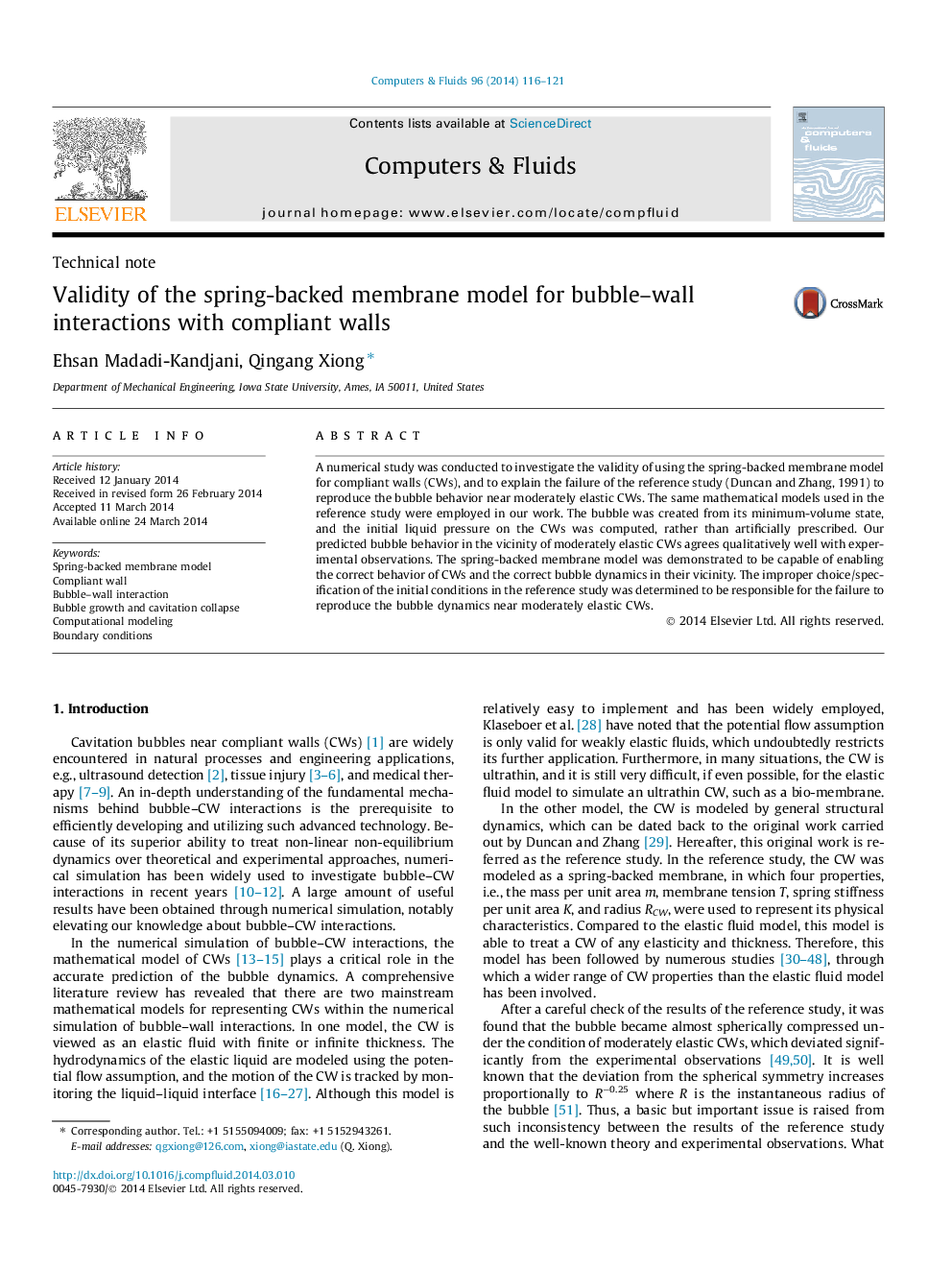| Article ID | Journal | Published Year | Pages | File Type |
|---|---|---|---|---|
| 768337 | Computers & Fluids | 2014 | 6 Pages |
•Bubble dynamics near compliant walls with different elasticities was simulated.•Validity of using spring-backed membrane model for compliant walls was verified.•Bubble growth was found to affect significantly its subsequent collapse process.•Correct assignment of initial and boundary conditions is required.
A numerical study was conducted to investigate the validity of using the spring-backed membrane model for compliant walls (CWs), and to explain the failure of the reference study (Duncan and Zhang, 1991) to reproduce the bubble behavior near moderately elastic CWs. The same mathematical models used in the reference study were employed in our work. The bubble was created from its minimum-volume state, and the initial liquid pressure on the CWs was computed, rather than artificially prescribed. Our predicted bubble behavior in the vicinity of moderately elastic CWs agrees qualitatively well with experimental observations. The spring-backed membrane model was demonstrated to be capable of enabling the correct behavior of CWs and the correct bubble dynamics in their vicinity. The improper choice/specification of the initial conditions in the reference study was determined to be responsible for the failure to reproduce the bubble dynamics near moderately elastic CWs.
